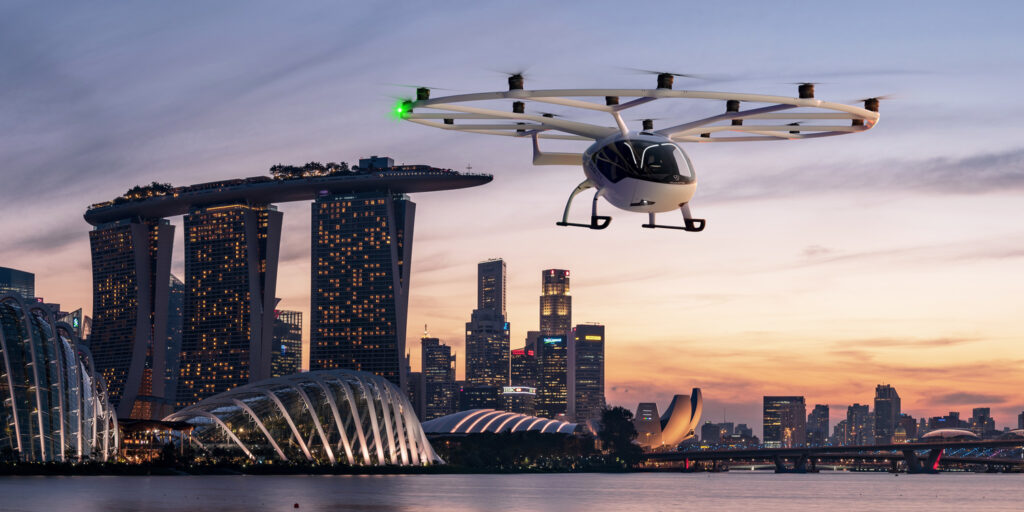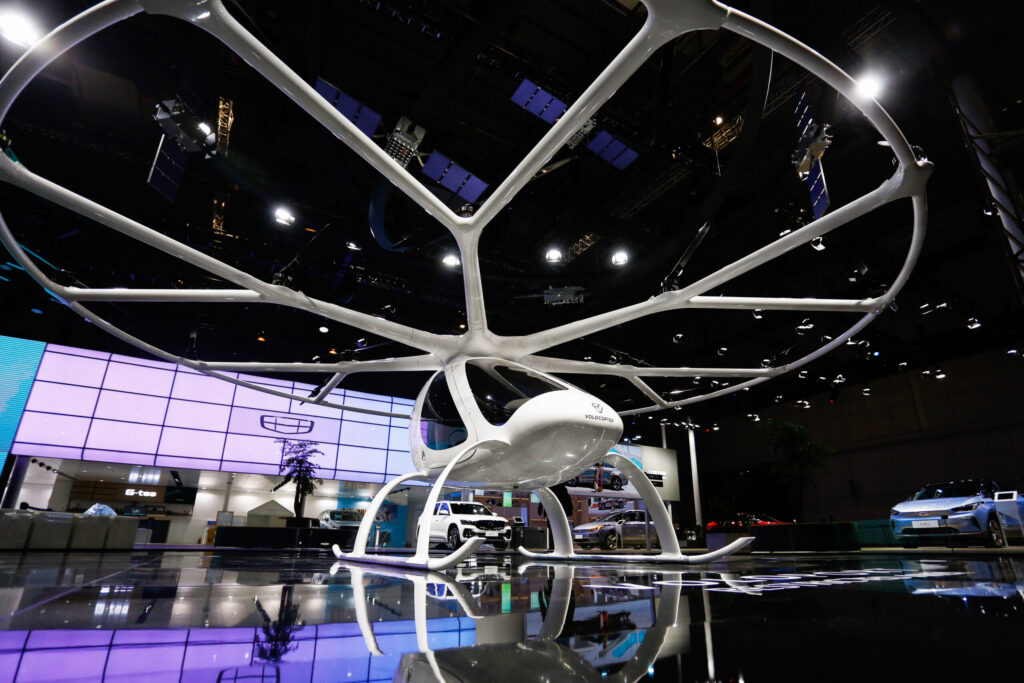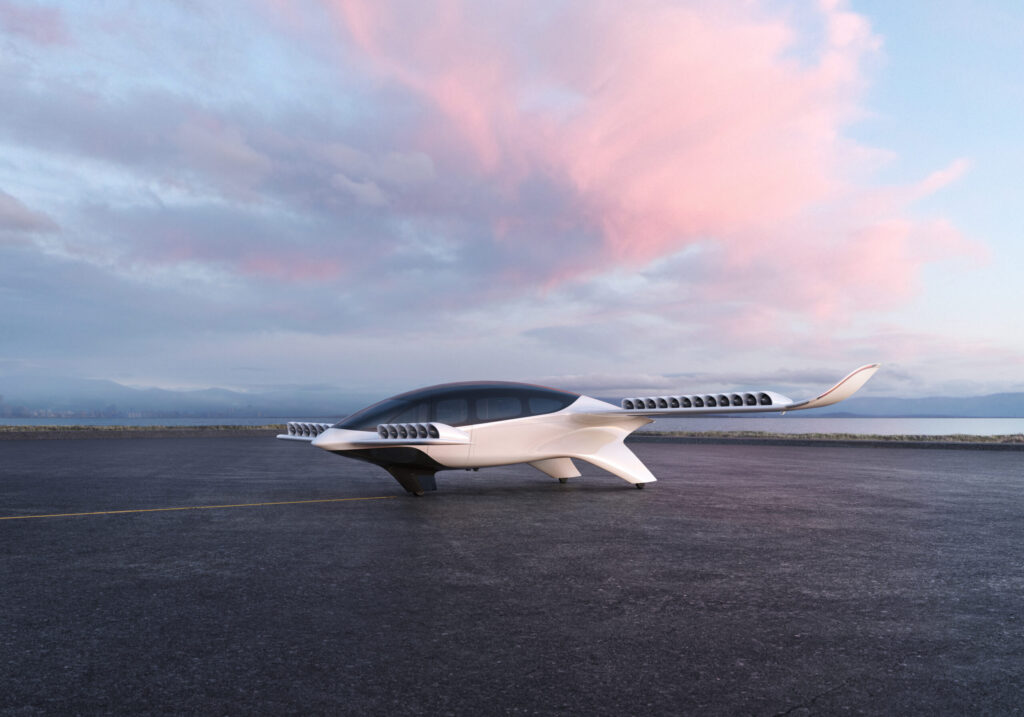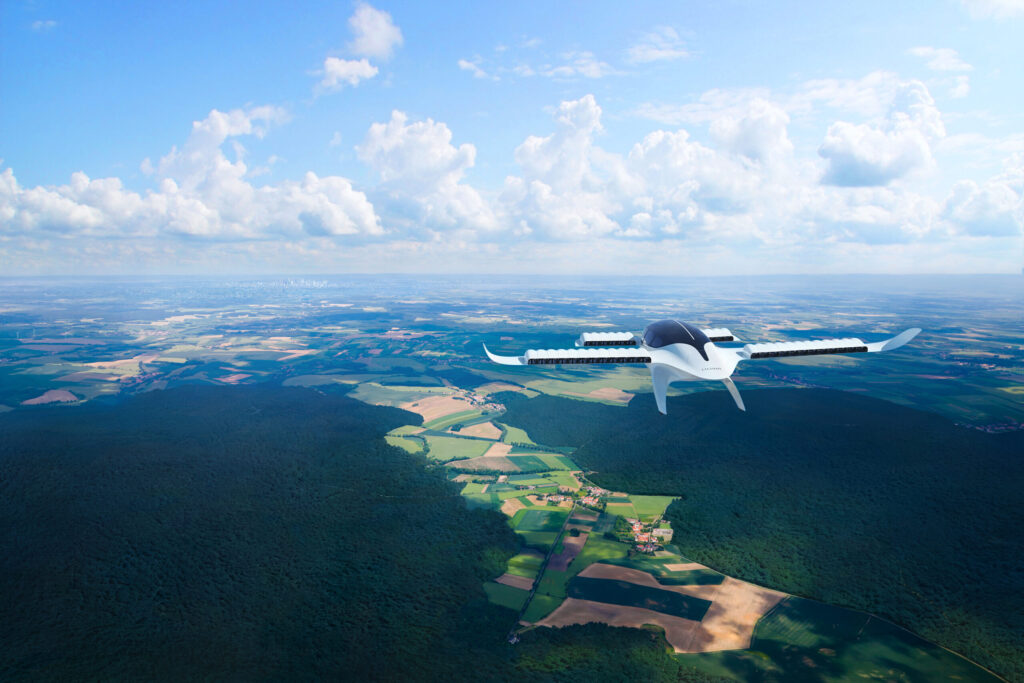Advanced technologies and disruptors in aviation are reshaping the travel landscape. Here are a few of the flying taxis preparing to lift us into the future of urban air mobility.

It’s been 24 years since the film The Fifth Element was released and yet its eye-popping scenery of flying taxis whizzing through skyways high above the city remain memorable. Who hasn’t fantasised about climbing into one of those cars?
That fantasy is close to becoming reality thanks to the established and emerging companies leading the way in urban air mobility (UAM) with electrical vertical take-off and landing aircraft (eVTOLs).

UAM is a new air transport system for passengers and cargo in and around densely populated environments. It is made possible by eVTOLs, which use electric power to hover, take off and land vertically – much like the Spinner cars in the Blade Runner movies.
The rapid ascension of eVTOLs has been fuelled by major advances in electric propulsion and the quest to alleviate road congestion, the strain on existing, gas-guzzling, ground transport systems as urban populations continue to rise, and reduce carbon emissions and noise.
Volocopter was one of the first companies to complete a manned eVTOL in 2011. Today, its portfolio comprises the fourth-generation urban air taxi, VoloCity; the VoloDrone for delivering cargo, and the four-seater VoloConnect which was unveiled in May this year.
The small VoloCity is designed to carry two people including the pilot plus hand luggage on short, point-to-point hops. Longer term, the aim is for the craft to operate autonomously without a pilot.
VoloCity can travel 35 km (around 22 miles), has an airspeed of 110 km/h (roughly 68 mph) and is equipped with multiple backup systems for safety, 18 motors powered by nine rechargeable batteries, and a new rear stabiliser to increase stability and lift. It’s also said to be quiet.
With Volocopter’s software system, VoloIQ, passengers will be able to book flights via an app and track weather conditions and more in real time.
The inner-city air taxi has already undergone flight tests in Germany, Dubai and Helsinki. As part of test flights in Singapore in October 2019, the company flew a manned 2X – a prototype precursor to VoloCity – over Marina Bay.

One aspect of the UAM system is vertiports – the infrastructures where eVTOLs land, takeoff, swap and recharge batteries, and where passengers board and disembark. At Marina Bay, Volocopter simultaneously showcased its own vertiport, VoloPort, complete with passenger lounge.
The company has been working with authorities in Singapore to get its air taxi services off the ground within the next three years. It is also aiming to bring VoloCity to Paris and the USA. It presented the 2X at the Shanghai International Automobile Industry Exhibition in April this year.
Lilium is another company vying for airspace – this time flying passengers regionally, as opposed to points within a city. And it’s upping the ante with its seven-seat Lilium Jet.

This sleek, streamlined, futuristic-looking aircraft boasts a spacious cabin with window seats, a central aisle to stretch your legs, and a hold for luggage. The pilot sits in a cockpit. Lilium also has an app for booking seats on flights.
The jet has a cruise speed of 175 mph at 10,000 ft with a range of 155 miles, and is powered by Lilium’s proprietary Ducted Electric Vectored Thrust technology, comprised of 36 electric ducted turbofan engines that are integrated into the wing flaps, which increases aerodynamic efficiency while lowering noise emissions and ground footprint.

Lilium has partnered with Lufthansa Aviation Training to select and train pilots. Plans for regional air mobility networks and vertiport locations are already under way in Germany and across central and south Florida in the US. The company aims to launch commercial services by 2025.
Before air taxis take to the skies, safety standards set by the likes of the European Union Aviation Safety Agency and the Federal Aviation Administration will need to be met in order to acquire relevant certifications.
In addition, infrastructure – networks with flight corridors and vertiport hubs – needs to be established, flight permits obtained, pilots trained, eVTOL air traffic management integrated with other systems, and guidelines agreed.
The Japanese government is looking to put flying cars in the air by 2023. Last year the transport minister, Kazuyoshi Akaba announced a set of guidelines for testing flying cars as early as March 2022.
This is good news for SkyDrive Inc., the Japanese startup founded in 2018 by automotive engineer Fukuzawa Tomohiro, who previously worked at the Toyota Motor Corporation. Last summer the company debuted the compact SkyDrive SD-03 – which looks like it’s flown straight out of Star Wars. According to the company, it is designed to be the world’s smallest eVTOL, requiring only as much space as two parked cars on the ground.
SkyDrive Inc. is already working on a new concept, the two-seater SD-XX, which will be able to fly 5-10 km at 50-60 km/h with a pilot and a passenger on board. The company aims to start mass production as early as 2026 and selling them by 2028.
By then, when airspace is buzzing with fully booked flying taxis, we could likely hop into our own cars and, like Luke Skywalker or Princess Leia, fly to destinations near and far. The skies really will be the only limit.

